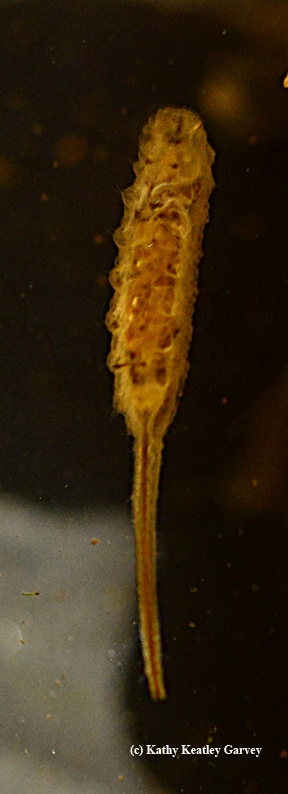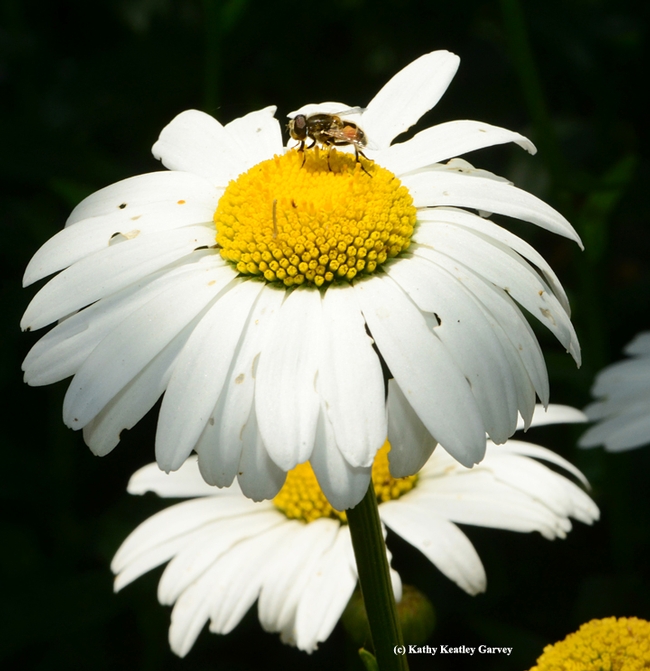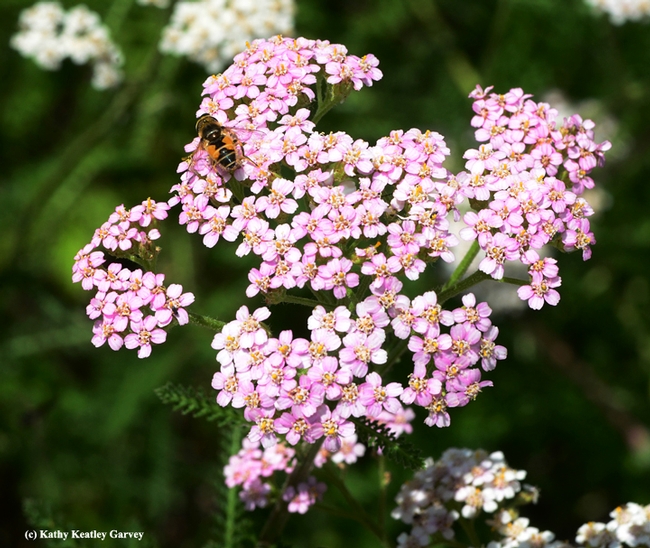
How many times have you encountered a "honey bee" on the Internet, in a book, magazine, newspaper or other publication, and found a syrphid fly misidentified as a honey bee?
It's truly amazing how often syrphid flies are mistaken for honey bees.
Take the Eristalis tenax, a European hover fly quite established in the United States.
And quite "established" as a honey bee.
It's a syprhid, in the family Syrphidae; in the subfamily, Eristalinee; in the tribe Eristalini; in the subtribe Eristalina; and in the genus, Eristalis.
It's typically called a drone fly (it's about the size of a male honey bee or drone) but some folks also call it a hover fly, a flower fly or a syprhid.
No matter what you call it, it's a fly, not a bee.
Now to the "rats" part.
Their larva is known as a rat-tailed maggot. Its long tail-like structure resembles that of a rat or a mouse. Sometimes it looks like a corn dog with a tail. Or a butterscotch-colored lollipop with a tail.
Rat-tailed maggots live in such habitats as sewers, manure pile pools, drainage ditches and other badly polluted areas. Which is probably why you don't see them. (And if you did, you'd know it wasn't a corn dog with a tail.)
But in the adult stage, they're pollinators. They go where the honey bees go.
You'll find the adult drone flies nectaring on such flowers as lavender, catmint, daisies, sunflowers and yarrow, and hear people exclaiming "Look at the bees!"
I'm waiting for someone to say "They used to be rat-tailed maggots."
Attached Images:

A drone fly, Eristalis tenax, on a Shasta daisy at the Luther Burbank Home and Gardens.. (Photo by Kathy Keatley Garvey)

A drone fly,Eristalis tenax, on yarrow at the Luther Burbank Home and Gardens. (Photo by Kathy Keatley Garvey)

Close-up of a drone fly, Eristalis tenax. (Photo by Kathy Keatley Garvey)